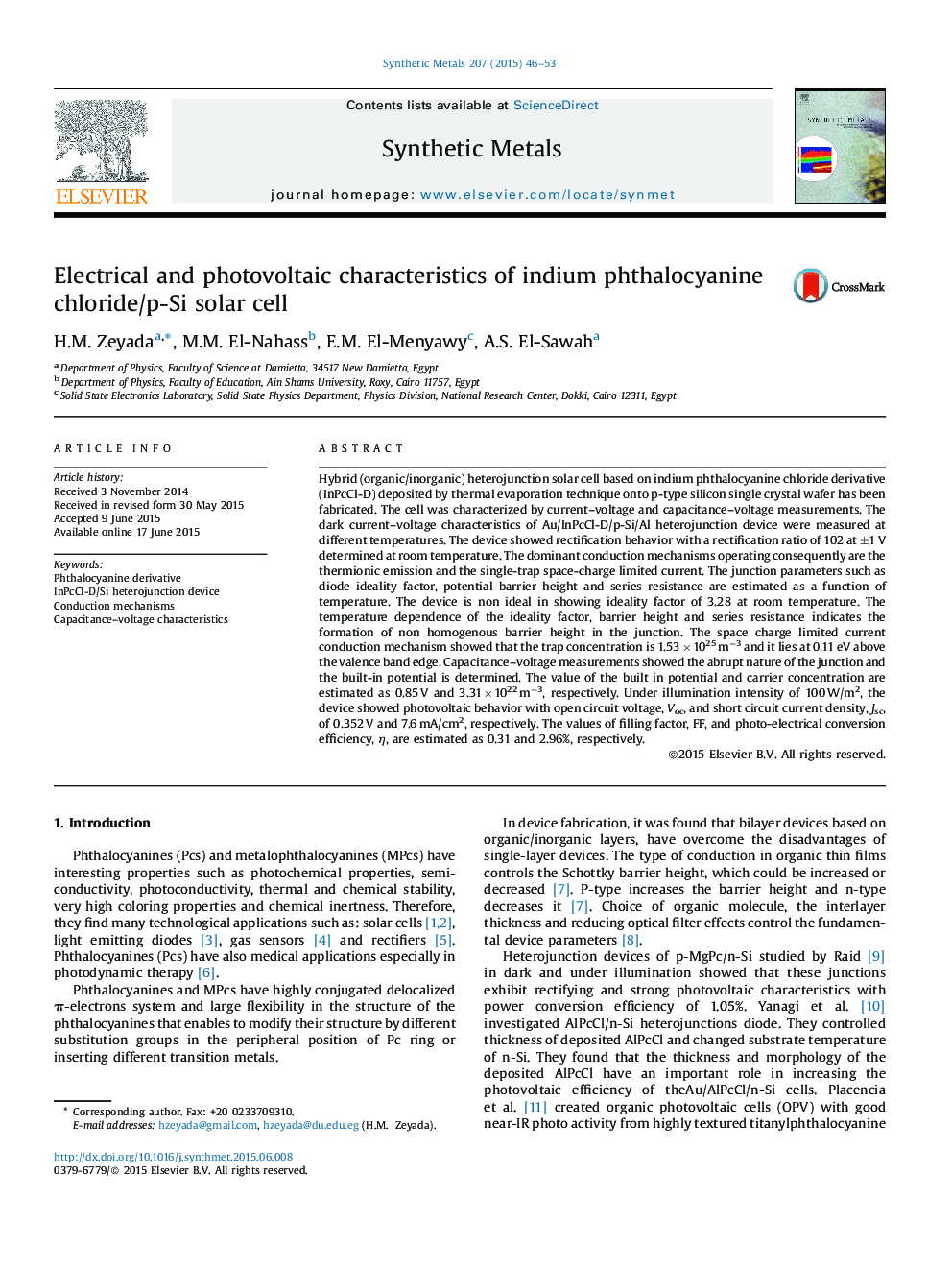| Article ID | Journal | Published Year | Pages | File Type |
|---|---|---|---|---|
| 1440448 | Synthetic Metals | 2015 | 8 Pages |
•Hybrid (InPcCl-D/p-Si) heterojunction solar cell has been constructed.•The conduction mechanisms are thermionic emission and single trap SCLC.•The junction has abrupt nature.•The device has photovoltaic behavior of filling factor 0.31 and efficiency 2.96%.
Hybrid (organic/inorganic) heterojunction solar cell based on indium phthalocyanine chloride derivative (InPcCl-D) deposited by thermal evaporation technique onto p-type silicon single crystal wafer has been fabricated. The cell was characterized by current–voltage and capacitance–voltage measurements. The dark current–voltage characteristics of Au/InPcCl-D/p-Si/Al heterojunction device were measured at different temperatures. The device showed rectification behavior with a rectification ratio of 102 at ±1 V determined at room temperature. The dominant conduction mechanisms operating consequently are the thermionic emission and the single-trap space-charge limited current. The junction parameters such as diode ideality factor, potential barrier height and series resistance are estimated as a function of temperature. The device is non ideal in showing ideality factor of 3.28 at room temperature. The temperature dependence of the ideality factor, barrier height and series resistance indicates the formation of non homogenous barrier height in the junction. The space charge limited current conduction mechanism showed that the trap concentration is 1.53 × 1025 m−3 and it lies at 0.11 eV above the valence band edge. Capacitance–voltage measurements showed the abrupt nature of the junction and the built-in potential is determined. The value of the built in potential and carrier concentration are estimated as 0.85 V and 3.31 × 1022 m−3, respectively. Under illumination intensity of 100 W/m2, the device showed photovoltaic behavior with open circuit voltage, Voc, and short circuit current density, Jsc, of 0.352 V and 7.6 mA/cm2, respectively. The values of filling factor, FF, and photo-electrical conversion efficiency, η, are estimated as 0.31 and 2.96%, respectively.
